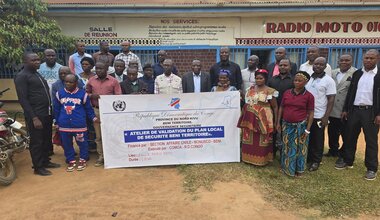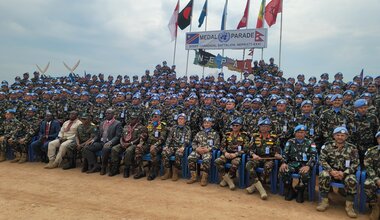Luca Guanziroli: Reflections on an effective strategy to fight against child labor in mines and qua
"I dropped out of school when my father died in 2009, and I started to work in the mine to help my family," says RJ, 17, a child miner in a craft copper career in Kolwezi. RJ shares the fate of 40,000 children between the ages of 4 and 18 years who are working in the quarries and mines of Katanga. This alarming reality affects primarily children from poor families in search of survival strategies in what is actually a natural resource-rich region.
Working conditions in the mines are dangerous and, as such, is considered by the International Labour Organisation among the worst forms of child labor. Indeed, working in mines and quarries involves real risks for the health, security and physical development of children as well as long-term consequences for the future of those children who are diverted from to school.
The paradox of child labour as a survival strategy for the poor in rich Katanga
The decline of Gécamines, the main job provider in the region, has led to the restructuring of the mining operation between private and craft concessions, and with it, the impoverishment of part of the population who previously worked for the national mining company. Poverty, combined with lack of economic opportunities, have thus contributed to the growth of the informal sector, and particularly artisanal mining around the old concessions, attracting local workforce in search of survival strategies. In most cases, socio-economic vulnerability of families has led parents to make their children contribute to the family income. Children are then sent to the mines, either working with their families or as daily workers for a group of miners or a merchant.
A comprehensive strategy to fight child labour
"The fight against child labour in mines and quarries is complex, because the artisanal concessions are informal and then difficult to control, and because child labor mainly affects vulnerable families," says Luca. "That is why it is important to implement a comprehensive strategy coupled with a community approach, that of the protection community, in order to reduce the exposure of children to work in mines by fighting against socio-economic vulnerability of poor households and the community in its whole.''
First of all, working with communities is key to meeting the real needs of vulnerable families in the community and to support them to protect their children. As an example, community cooperatives contribute to community resilience and enhancing the capacities and opportunities of those families, which divert them to send their children to the mines.
Mining companies have an important role to play too, given their social obligations vis-à-vis the mining code and their concern, in terms of image, to curb child labor in their supply chain. "Responding to child labor in supporting mining social initiatives is an effective way to reintroduce the issues related to child rights such as education, AIDS, sanitation, etc. These initiatives, if coordinated with local communities and appropriated by them, constitute a real leverage for community development, and can be further integrated in socio-economic development plans of the province, "says Luca.
"An effective strategy against child labor must also include social dialogue frameworks so as to connect mining, local authorities and communities affected by mining activities", Luca adds.These platforms have several objectives, which include mining commitment to community development and more access to benefits for the affected community through social projects.

 UN
UN United Nations Peacekeeping
United Nations Peacekeeping









